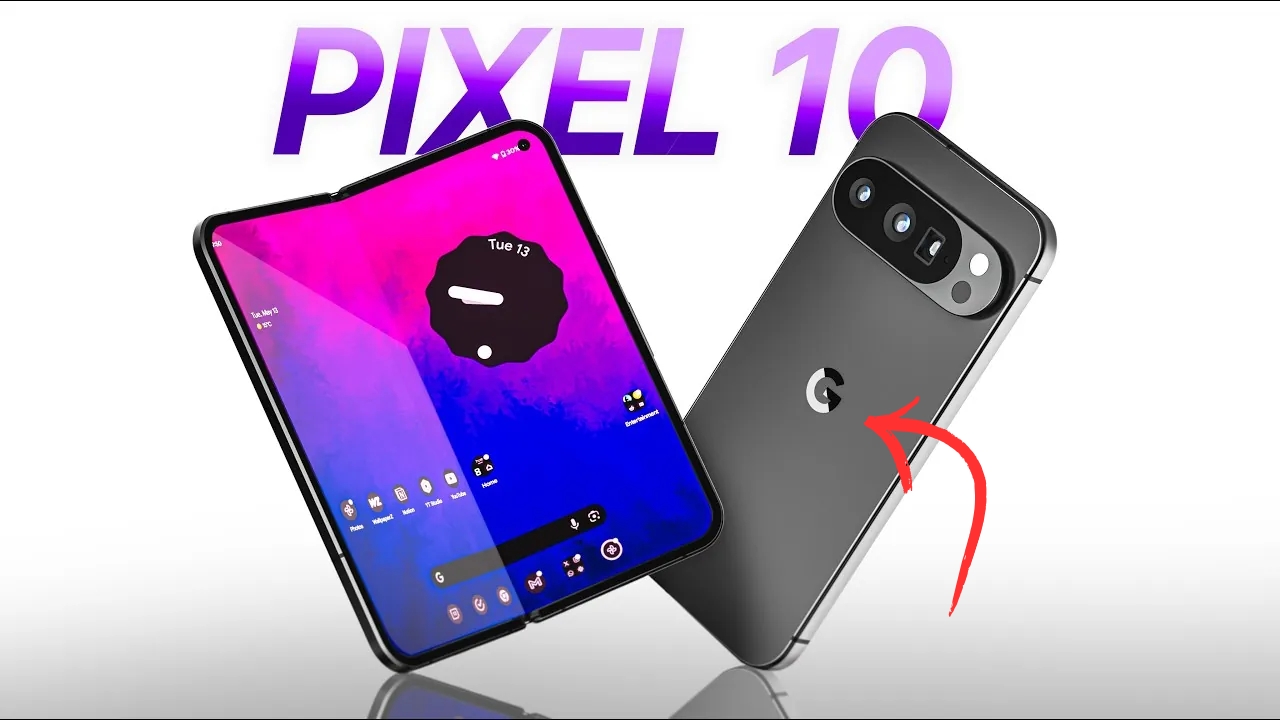Pixel 10 Series: The smartphone world is buzzing with excitement as Google prepares to unveil the Pixel 10 series in August 2025. This isn’t just another incremental update – it represents a major shift in Google’s approach to smartphone technology.
At the heart of this transformation lies the groundbreaking Tensor G5 chip and a fresh palette of vibrant colorways that promise to make the Pixel 10 series stand out in a crowded market.
The Tensor G5 Revolution: Breaking Free from Samsung
For the first time since launching the Tensor series in 2021, Google has completely cut ties with Samsung for chip development. The Tensor G5 marks Google’s first fully self-designed chip, shifting manufacturing to TSMC and representing a complete departure from the Samsung-based Exynos foundation that powered previous Tensor processors.
This change isn’t just about corporate partnerships – it’s about performance and efficiency. The new chip utilizes TSMC’s advanced 3nm N3E process, promising better performance and energy efficiency compared to Samsung’s 4nm manufacturing used in previous generations. For everyday users, this translates to phones that should run cooler, last longer, and deliver smoother performance throughout the day.
What makes the Tensor G5 particularly exciting is its custom approach to key components. Google is creating a fully custom Image Signal Processor (ISP) for the Pixel 10, moving away from modified Samsung ISPs to deliver a more focused camera experience. This could be the game-changer that brings back the computational photography magic that made earlier Pixel phones so beloved.
The performance improvements are substantial on paper. Early estimates suggest a 20% boost in single-core performance and a 35% improvement in multi-core performance compared to the Tensor G4. While these numbers don’t put it at the top of the flagship chip leaderboard, they represent meaningful progress for Google’s silicon journey.
A Fresh Take on Graphics and Gaming
One of the most surprising aspects of the Tensor G5 is Google’s decision to ditch ARM’s Mali GPU in favor of Imagination Technologies’ DXT-48-1536 GPU running at 1.1 GHz, which brings ray tracing support to Google chips for the first time. This signals Google’s growing interest in gaming capabilities and visual performance, areas where previous Tensor chips have traditionally lagged behind competitors.
The GPU switch also introduces GPU virtualization support, hinting at Google’s broader vision for how we might interact with our devices in the future. While the immediate benefits might not be obvious to most users, this foundation could enable new features and capabilities down the road.
Colors That Pop: The Pixel 10 Palette
Beyond the technical improvements, Google is making a bold statement with the Pixel 10 series colorways. The company is retiring the long-standing Obsidian and Porcelain colors that have been staples since the Pixel 6, replacing them with Midnight and Light Porcelain – similar but distinctly different options that signal a fresh design direction.
The base Pixel 10 is getting some of the most exciting color options. The “Indigo” colorway offers a striking blue shade reminiscent of the beloved “Really Blue” Pixel from 2017, while “Limoncello” delivers a vibrant yellow that brings energy to the lineup. These bold choices show Google isn’t afraid to take risks with color, moving away from the safe, muted tones that have dominated recent smartphone releases.
For those who prefer subtle elegance, “Frost” offers something closer to gray rather than traditional white, providing a sophisticated alternative that should age well over time.
Pro Models Get Premium Treatment
The Pixel 10 Pro and Pro XL are receiving their own distinctive color treatment. The Jade colorway carries gold accents that add a premium feel, while Moonstone offers a more muted gray option for users who prefer understated sophistication. These choices reflect Google’s understanding that Pro users often want devices that can transition seamlessly from casual to professional settings.
Interestingly, Google is implementing some unusual restrictions with color availability. The eye-catching Jade color will only be available with 256GB of storage on Pro models, a decision that might frustrate users who want maximum storage with their preferred color choice.
Camera Innovation at the Core
Perhaps the most significant real-world improvement coming with the Pixel 10 series is the custom ISP development. Google is putting considerable effort into building its own camera processing pipeline, which could bring back some of the computational photography magic that made earlier Pixel cameras special. For photography enthusiasts, this represents the most exciting aspect of the Tensor G5 upgrade.
The custom ISP isn’t just about technical specifications – it’s about giving Google complete control over how images are processed, from the moment light hits the sensor to the final photo appearing in your gallery. This level of integration could enable new computational photography features that wouldn’t be possible with off-the-shelf components.
What This Means for You
The Pixel 10 series represents Google’s most ambitious smartphone effort yet. The combination of the fully custom Tensor G5 chip and bold new colorways shows a company confident in its vision and willing to take risks to differentiate its products.
For existing Pixel users, the Tensor G5 promises the efficiency improvements that have been long requested. For photography enthusiasts, the custom ISP could mark a return to Pixel camera supremacy. And for anyone tired of boring phone colors, the new palette offers options that actually express personality.
The Pixel 10 series is expected to launch in August 2025, continuing Google’s trend of summer releases. While pricing hasn’t been officially announced, the focus on premium materials and custom silicon suggests Google is positioning these devices as true flagship competitors.
With the Tensor G5 and these vibrant new colors, Google isn’t just updating its phones – it’s making a statement about the future of Android and computational photography. The question isn’t whether the Pixel 10 series will be good, but whether it will be bold enough to change how we think about smartphone innovation.
